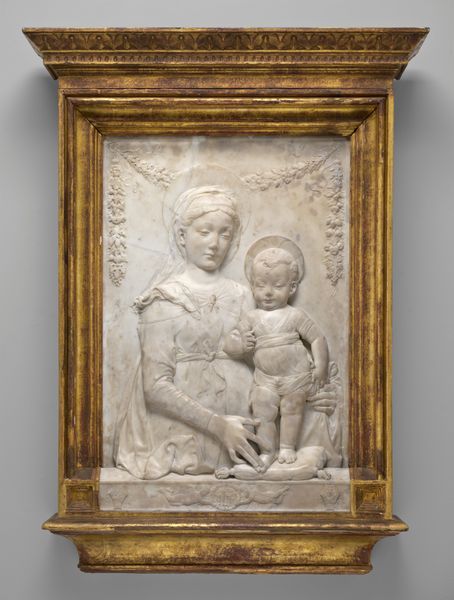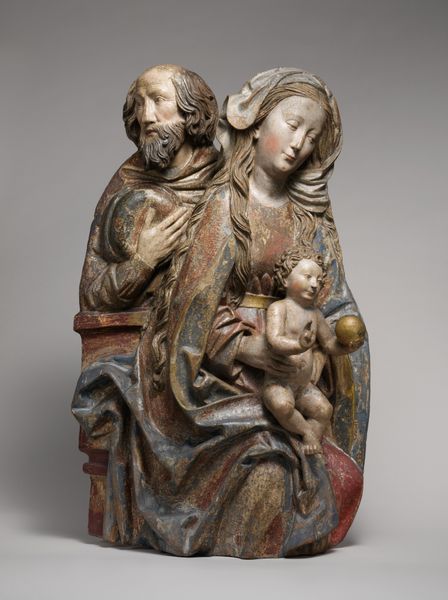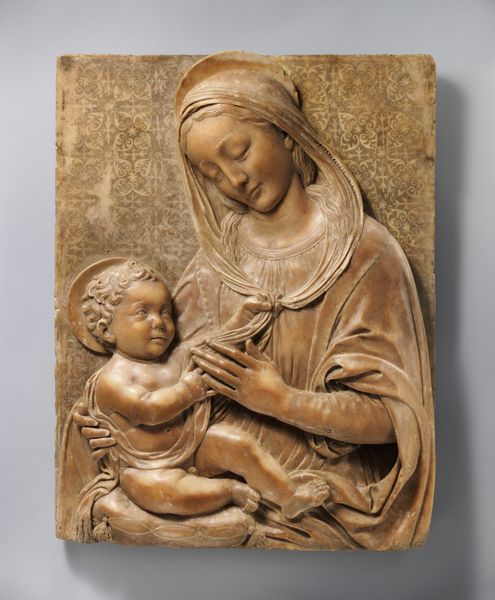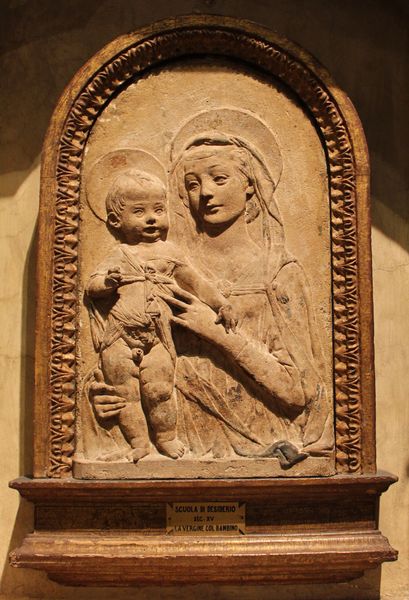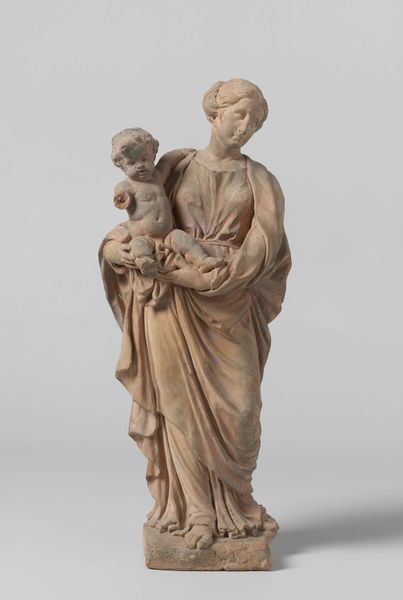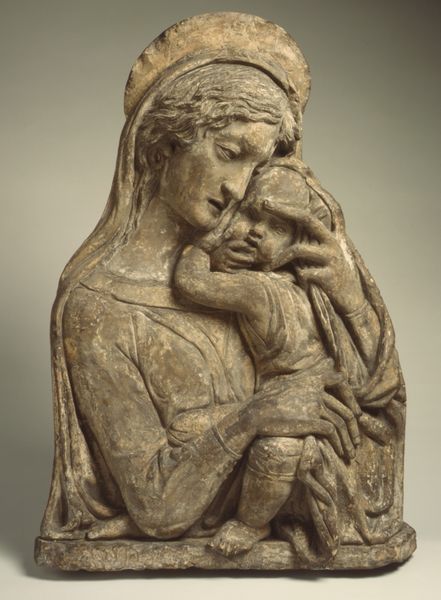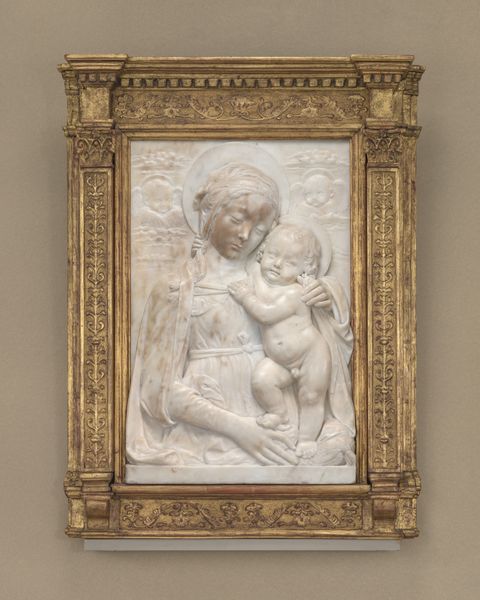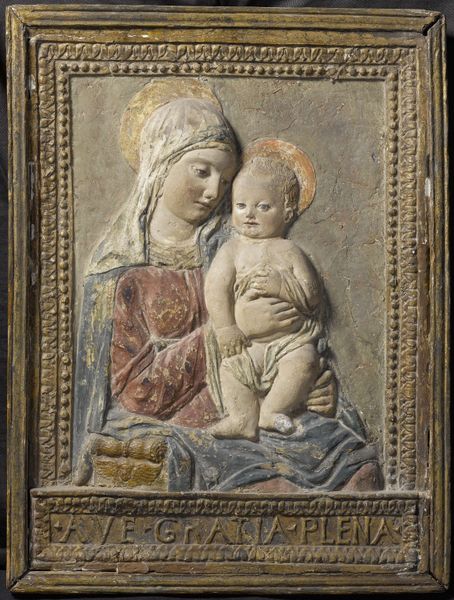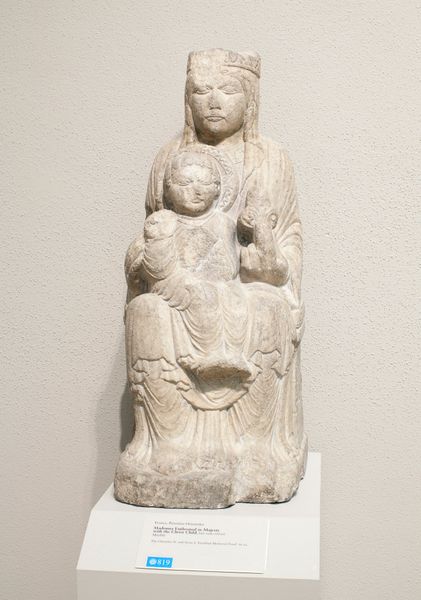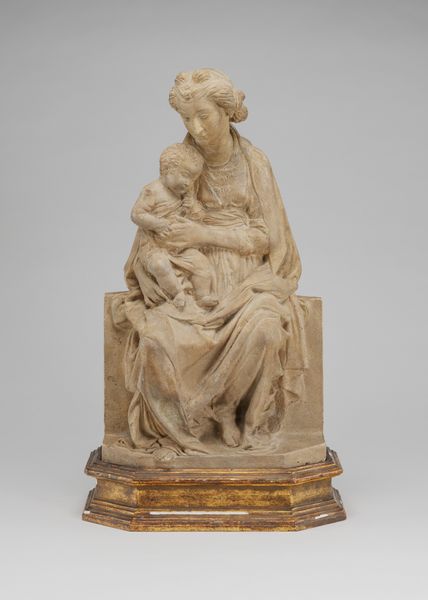
relief, sculpture, marble
#
narrative-art
#
sculpture
#
relief
#
classical-realism
#
figuration
#
madonna
#
child
#
sculpture
#
decorative-art
#
marble
#
italian-renaissance
#
early-renaissance
#
angel
Dimensions: Overall (confirmed): H. 28 7/8 x W. 21 1/8 in., 90lb. (73.3 x 53.7 cm, 40.8237kg); Framed: H. 55 5/8 x W. 35 3/4 x D. 6 in., 145lb. (141.3 x 90.8 x 15.2 cm)
Copyright: Public Domain
Editor: So, this marble relief is titled *Madonna and Child with Angels,* created by Antonio Rossellino sometime between 1450 and 1465. It’s currently housed at the Metropolitan Museum of Art. What strikes me most is its tenderness. There's something so gentle about the expressions and the soft carving. What symbols are at play here? Curator: The tenderness you perceive isn't accidental. Rossellino expertly uses visual symbols to evoke specific emotional responses tied to deeply ingrained cultural memories. Consider the Madonna's downward gaze; this isn’t simply a mother looking at her child. It evokes *compassio*, a visual shorthand for sorrow and premonition of Christ’s future suffering, anchoring it in a broader narrative of sacrifice and redemption. How does the presence of the angels play into this? Editor: Well, the angels seem to be adding a sense of the heavenly, divine approval and perhaps even adoration. I guess they also amplify the Madonna’s importance? Curator: Precisely! Angels function as a visual chorus, sanctifying the scene and highlighting the sacredness of motherhood, which transcends mere biology in this portrayal. It also echoes the Byzantine traditions of icon painting which has a continuity to this particular image- a heavenly host witnessing and validating the central figures. Editor: That's fascinating! I hadn’t considered the connection to the icon tradition. I was more focused on the Renaissance humanism aspect, which feels very present. Curator: It's both! It signals that return to classical forms and earthly beauty, but this doesn't negate the piece's roots in sacred imagery and its powerful use of familiar symbols. How do you think this plays into how people may have understood this when it was first made? Editor: Understanding these connections really enriches the viewing experience, knowing what visual vocabulary would have resonated with audiences then, helps bridge that temporal gap, thanks. Curator: Indeed, and realizing the staying power of these symbolic languages through art. A single image holds an abundance of visual information to tap into the cultural memory, something that the work seems to always provide.
Comments
No comments
Be the first to comment and join the conversation on the ultimate creative platform.

